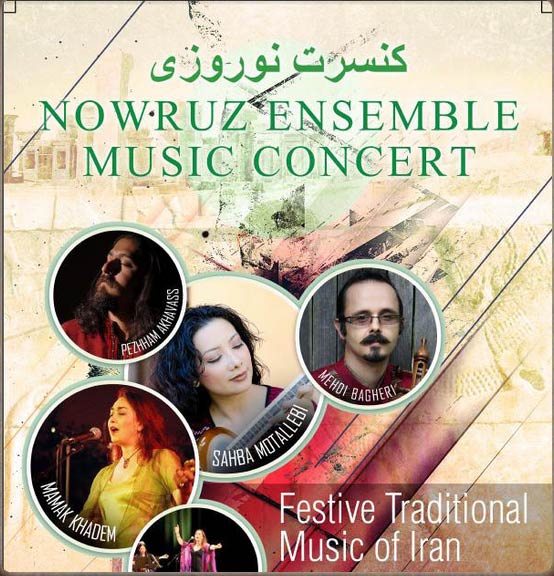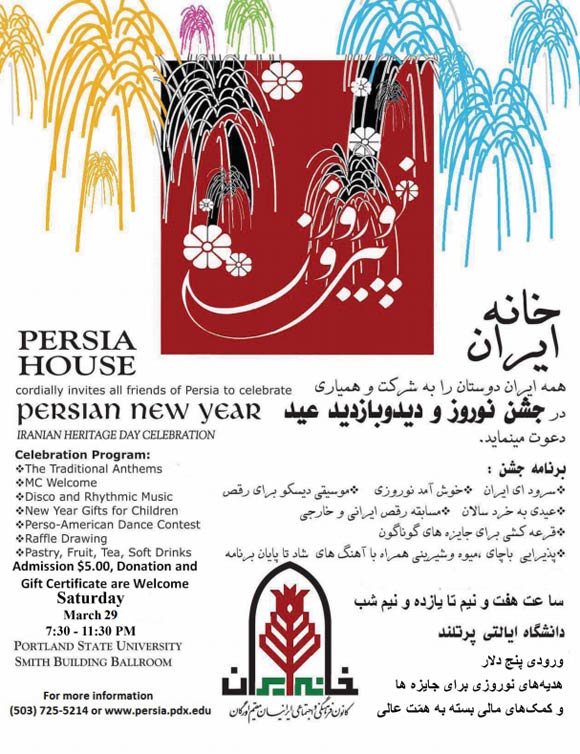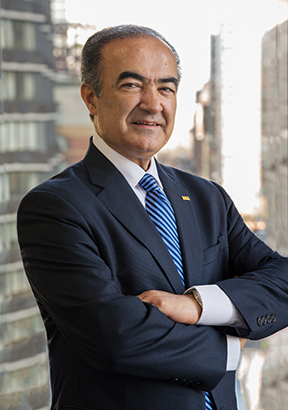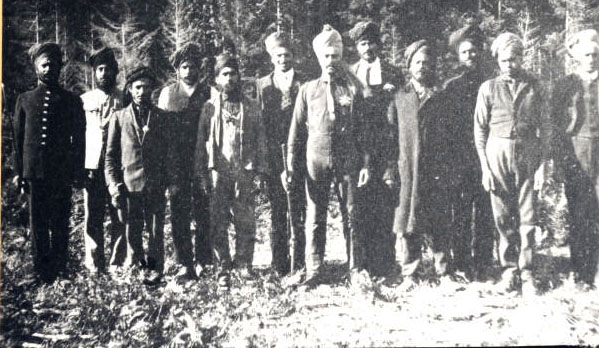Between 10,000 and 15,000 people of Iranian heritage live in Oregon; of those, 3,000 to 4,000 residents were born in Iran. Most Iranian Americans in Oregon live in the Portland metropolitan area, although there are small communities in Corvallis, Eugene, and Ashland, primarily associated with the universities.
Iranian students have been coming to Oregon since the 1930s. At that time, most were young, single men who came to the United States to study engineering and science with the goal of returning to work in Iran’s expanding economy. By the early 1970s, several hundred Iranian students were attending Oregon universities. Most of those students intended to return to Iran, however many decided to seek asylum in the United States after the Islamic Revolution in 1978–1979 overthrew the Shah and created an Islamic-based government.
A second wave of Iranians began to arrive in Oregon after the Revolution and the Iran–Iraq War (1980–1988) that followed. Most of the new immigrants came as families and were educated upper-class Iranians who had political, ideological, and economic reasons (among others) to flee Iran and the dangers of war. Many of the Iranian religious and ethnic minorities left, fearing persecution from the Islamic government.
Ethnicity and Identity
Iran is composed of many ethno-linguistic and religious groups and they are represented in Oregon. Although most Iranians are Muslims of the Shi’a branch, there are also indigenous Christians in Iran, (specifically Armenians and Assyrians), an indigenous Jewish population, and Baha’is, Zoroastrians, and other religious minorities. These groups are over-represented in the immigrant population in the United States because, historically, they have been most likely to face persecution in post-Revolution Iran. Iranian Americans in Oregon represent this cultural, ethnic, and religious complexity and have their own religious or ethnic organizations. Nevertheless, most identify as Iranians and participate in inclusive community activities.
Iranian Americans generally refer to themselves as Iranians or Iranian Americans. However, some refer to themselves as Persian Americans, a reference to the name the country was known by in the West until the 1930s. Some Iranians feel Americans are more familiar with the name Persia and that being Iranian has negative connotations in the present political environment.
As with most immigrants, first-generation Iranian Americans in Oregon speak Persian at home, although most are also proficient in English. The second generation, born and raised in Oregon, usually speaks some Persian at home, but speaks English in public. Later generations speak only English. Iranian Americans in Oregon, especially the second and later generations, tend to marry non-Iranians. A national survey of Iranian Americans in 2008 found that nearly 50 percent of Iranian Americans surveyed married non-Iranians. Although most Iranian Americans arrived in the United States within the last few decades, 81 percent are American citizens and 15 percent are permanent residents.
According to the 2010 census, almost 51 percent of Iranian Americans have college degrees (the United States national average is 28 percent), and one in four Iranian Americans has a masters or higher degree, the highest percent of any ethnic group in the United States. This is in part because many who immigrated had professional backgrounds. In the years after the 1979 Revolution, more than 6,000 university professors and one-third of the country’s physicians left Iran. During the same period, an estimated 30 to 40 billion dollars was transferred out of Iran to wealthy Iranians in the United States, including Oregon.
Iranian Americans in Oregon have been successful as medical doctors, engineers, and academics. This is in part because before the Islamic Revolution the Iranian educational system was modeled on the professional educational system in the United States, and professional degrees received in Iran are recognized in the U.S.
Politics
A survey of Iranian Americans nationally found that 79 percent were registered to vote, with 47 percent identified as Democrats, 12 percent as Republicans, and 28 percent as Independents. Many Iranian Americans in Oregon still have relatives or colleagues in Iran, and they closely follow events in their home country. Most would like to see an American embassy in Tehran and relations between Iran and the United States improved. Generally, however, Iranian Americans in Oregon have avoided taking public positions. However, this is changing as more Iranian Americans are entering the political area. In the 2004 election, Goli Ameri, an Iranian American, ran unsuccessfully for U.S. representative as a Republican in Oregon’s First District. Cyrus Javadi is an Oregon State Representatice in the 32nd district and Farrah Chaichi is a Represntative in Oregon's 35th disctrict.
Some Iranian Americans in Oregon visit Iran, often to see family and friends. However, returning to the Univted States is sometimes risky for those who fled the Islamic Revolution. The Iranian government has detained some visitors, partly because many who fled were under suspicion by the Iranian authorities. In addition, military service is mandatory in Iran, and most Iranian Americans in Oregon left the country before completing their military obligation. Iran does not recognize dual citizenship, and the government assumes that any person of Iranian heritage visiting Iran is an Iranian citizen.
Many Iranians follow events in Iran closely. On October 1, 2022, hundreds of Iranians and supporters gathered in Portland to protest the killing of Mahsa Amini, the twenty-two year old Iranian woman who was killed by the morality police in Iran for not wearting her head covering properly.
Cultural, Business, and Civic Organizations
Iranian Americans in Oregon celebrate important national holidays, especially Nowruz, which means “new day” in Persian. Nowruz takes place on the vernal equinox, usually March 21, and marks the first day of the Persian solar calendar. The Nowruz celebration, whose origins can be traced to Zoroastrian times before the Islamic conquest in the eighth century, lasts for two weeks and includes a fire festival and four other celebrations. In the last few years, over a thousand people attended Nowruz celebrations at Oaks Park in Portland. Nowruz celebrations have also taken place at Oregon State University and Lewis and Clark College.
Iran’s rich culture, especially in poetry, music, carpets, and weaving, has been continued by Iranian Americans in Portland. Older Iranian Americans meet regularly to recite Persian poetry. The ArtMax Academy teaches and sponsors concerts of Iranian music, which draw large crowds in Portland. At the annual Iranian festival, held every summer at Portland State University, many booths feature Iranian clothes, food, music, and artifacts.
A number of Iranian American organizations operate in Oregon, including the American Iranian Friendship Council, the Iranian American Professional Society of Oregon, the Andisheh Center, Persian House at Portland State University, and the Iranian Women Association of Oregon. The Andisheh Center sponsors cultural events, including concerts and the annual Portland Iranian Festival. The Iranian Women’s Association offers Persian language classes for children of Iranian families, and Portland State University has a minor degree program in Persian language and culture.
The Iranian American community in Oregon also connects with non-Iranian advocates, including writer Terrence O’Donnell (1924–2001) who wrote Garden of the Brave War: Recollections of Iran (1980) based on his time spent there; and Gretchen Kafoury (1942–2015), a political leader in Oregon and the City of Portland, who served in the Peace Corps in Iran and founded the American Iranian Friendship Council.
Significant Iranian Americans in Oregon
Important Iranian Americans in Oregon include many professors, medical doctors, engineers, and business people who have made significant contributions to Oregon and to the Iranian American community. These include Sohrab Vossoughi, the founder and CEO of Ziba Design; Fariborz Maseeh, engineer and business owner, who contributed to the Fariborz Maseeh College of Engineering and Computer Sciences at Portland State; and Dr. Rahmat Shoureshi, an engineer and former president of Portland State University.
-
![]()
Poster for concerts during Nowruz in Portland, 2019.
Courtesy Andisheh Center
-
![]()
Engineer Fariborz Maseeh, Portland State University.
Courtesy Portland State University
-
![]()
Perisan New Year Celebration, 2019.
Courtesy Andisheh Center
-
![]()
Rahmat Shoureshi, president of Portland State University.
Courtesy Portland State University
-
![]()
Andisheh Center.
Courtesy Andisheh Center
Related Entries
-
![Afghans in Oregon]()
Afghans in Oregon
The first wave of Afghans arrived in Oregon in the early 1980s, fleeing…
-
![East Indians of Oregon and the Ghadar Party]()
East Indians of Oregon and the Ghadar Party
In the early twentieth century, five to six hundred men and one family …
Map This on the Oregon History WayFinder
The Oregon History Wayfinder is an interactive map that identifies significant places, people, and events in Oregon history.
Further Reading
Farr, Grant. The Shaping of Iran Today. Los Angeles, CA: Cognella Academic Publishing, 2013.
Gillis, Mary. "Iranian Americans—History, Modern Era, Immigration to the United States." Countries and Cultures, 2018. https://www.everyculture.com/multi/Ha-La/Iranian-Americans.html (Accessed January 27, 2019)
Hakimzadeh, S., and D. Dixon. “Spotlight on the Iranian Foreign Born.” Migration Information Source. Available at: https://www.migrationpolicy.org/article/spotlight-iranian-foreign-born (Accessed August 11, 2018).







